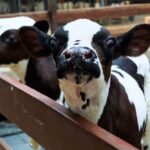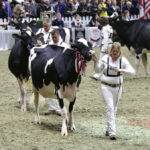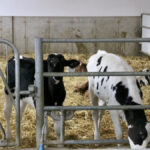Tag Archives Dairy Cattle

Heat stress in dairy cows damages health of calves: study
Researchers found that heat stress of pregnant dairy cows reduces fetal growth and influences performance and immune development of the offspring

National Holstein show moves to Saint-Hyacinthe
The show was moved after the Royal Agricultural Winter Fair was cancelled again in 2021
Maplevue experiences new kind of public event
Pandemic prevented Listowel farm from hosting in-person Manure Expo

Modifying MUN testing in dairy cow milk
New calibration for milk can improve accuracy of milk urea nitrogen testin

Dairy producers should get to know beef breeding tools
Profitability of cross-bred calves can be enhanced with available genetic tools

Simplifying conservation programs
Researcher sees unnecessary overlap of funding options in southern Ontario

StatsCan sees higher cattle, hog inventories at July 1
Full impacts of West's drought not yet counted

Experts challenge understanding of transition dairy cow health
Science Notes: Conditions previously thought as indicating poor health may actually be normal, advantageous

Dairy herd ID reporting enforced starting Sept. 1
The change is part of the traceability module for the proAction validation program

Are dry cow diets decreasing colostrum quantity?
Specialists ponder trend of low yield from first and second milkings
